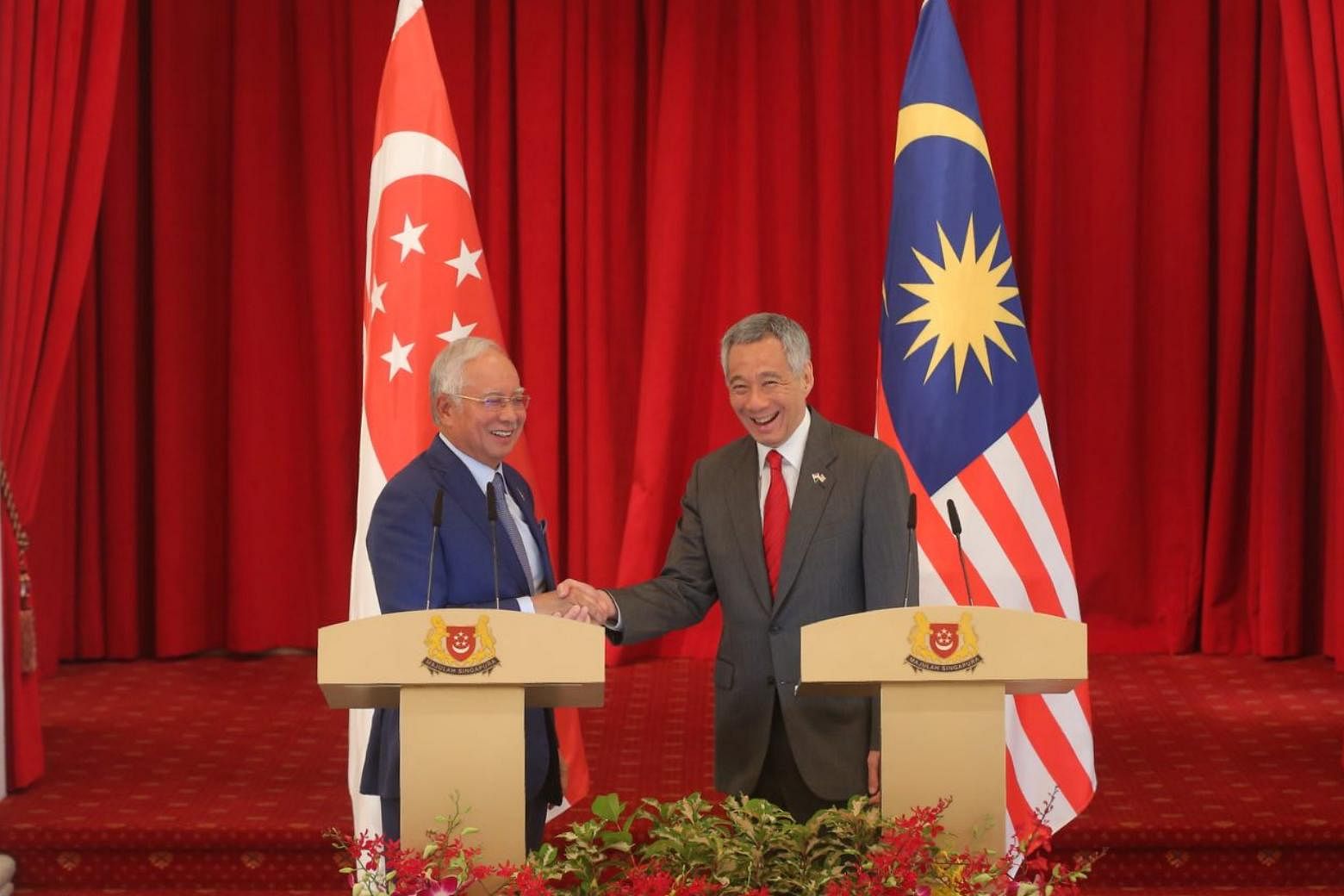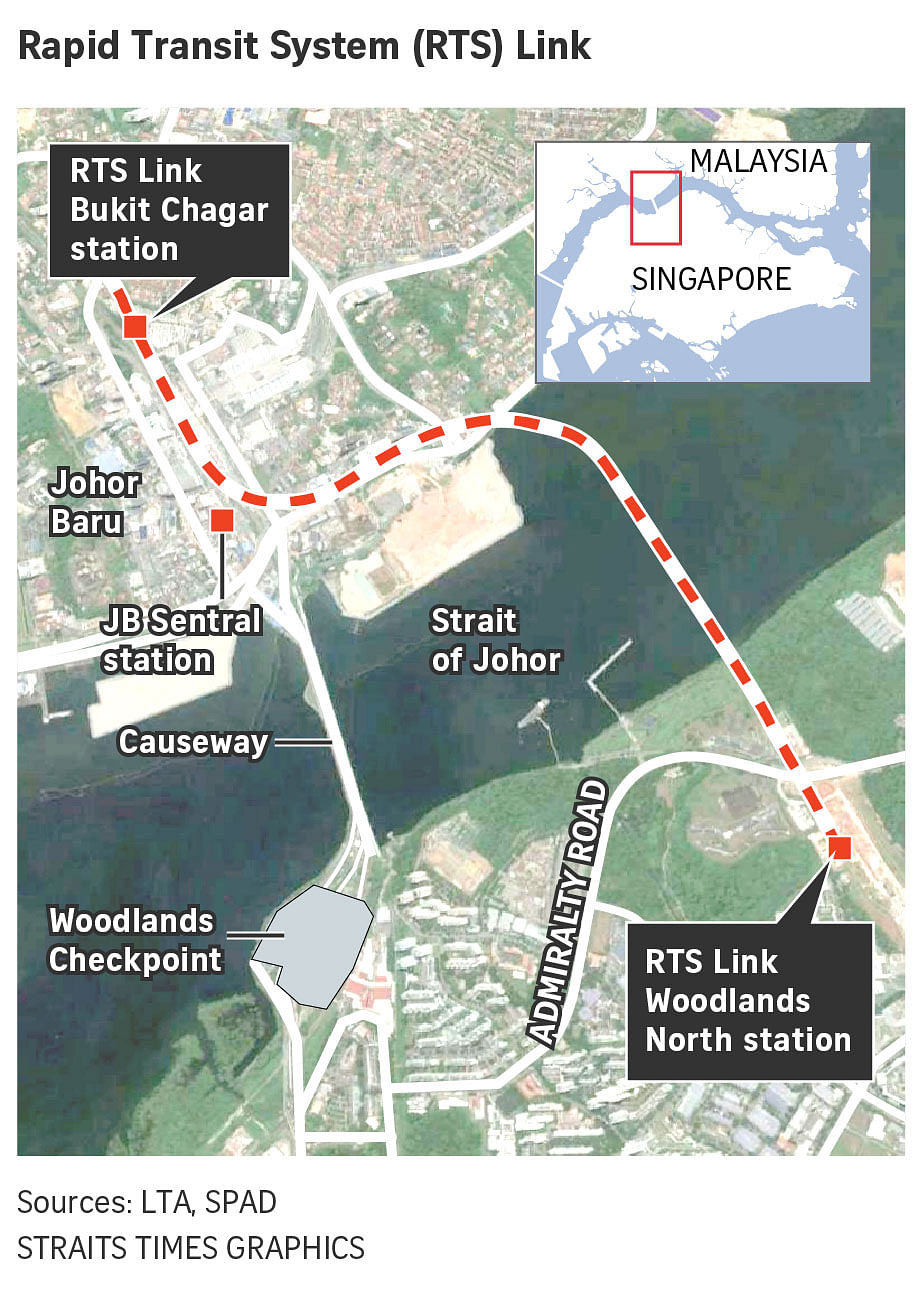Singapore, Malaysia ink bilateral agreement to build Rapid Transit System Link by 2024
Sign up now: Get ST's newsletters delivered to your inbox
Follow topic:
SINGAPORE - Singapore and Malaysia have inked a legally binding bilateral agreement to build a cross-border MRT line that will let commuters travel seamlessly between Woodlands North and Johor Baru.
The signing at the Istana on Tuesday (Jan 16) is a concrete step towards the building of the 4km Rapid Transit System (RTS) Link, which is set to open by Dec 31, 2024. Construction is expected to begin next year.
This is the second bilateral agreement between both countries in two years, following a deal in 2016 to build a 350km high-speed rail line between Kuala Lumpur and Singapore.
Prime Minister Lee Hsien Loong and Malaysian Prime Minister Najib Razak witnessed the signing of the bilateral agreement by Coordinating Minister for Infrastructure Khaw Boon Wan, who is also Transport Minister, and Malaysia's Minister in the Prime Minister's Department Abdul Rahman Dahlan.
The Rapid Transit System Link will be run by a joint venture formed by rail operators SMRT and Prasarana Malaysia, for the first concession period of 30 years.
The link is expected to reduce congestion at border crossings between Singapore and Malaysia.
When the RTS Link begins service, commuters can hop on a train every eight minutes on average. Trains will eventually arrive every four minutes on average during peak periods.

The line will start with five trains, and gradually have a total fleet of seven trains.
Up to 10,000 passengers an hour can travel in each direction between Johor's Bukit Chagar terminus station and the Singapore terminus in Woodlands North, where it will join the upcoming Thomson-East Coast Line (TEL).
Commuters will be able to transfer from the Rapid Transit System station to the Thomson-East Coast Line concourse via an underground link, without needing to exit the station.
Like the high-speed rail line, the Rapid Transit System Link - which will cross the Strait of Johor via a 25m-high bridge - will have a joint customs, immigration and quarantine facility at both terminus stations.
This means international-bound travellers will need to clear customs and immigration only once, when departing from the respective countries.
Taking into account the Johor Sultan's earlier reservations about the project, the new link's tracks will cross the Strait of Johor in a straight line rather than curving over water, making a bend over land in Malaysia instead.
In August last year, Sultan Ibrahim Sultan Iskandar had said that the idea for a curved bridge was impractical, unsustainable and potentially costly. He also said such a design would disrupt the Johor Baru city skyline, and agreed in November to the construction of a straight elevated bridge for the rail line instead.

It remains unclear if the rail link will be entirely above ground, and the authorities here are studying the need to acquire land in Singapore for the project.
The daily shuttle train service from Woodlands to Johor Baru will stop operating within six months of the link's opening.
The rail link project was announced in May 2010, with the completion date initially set for 2018.
In 2015, Malaysia chose Bukit Chagar as the main terminal station for the line, which will use the same rail systems and rolling stock as the 31-station TEL. The TEL will open in phases from 2019 to 2024.
Ahead of the retreat, the two prime ministers officially opened the 30-storey Marina One in Marina Bay district on Monday (Jan 15) evening.
Duo, a mixed-use development in the nearby Ophir-Rochor district, was lit up to mark its official opening too.
The developments are the outcome of a historic pact between Singapore and Malaysia in 2010 and reflect the turn in the ties between the two neighbours after a 20-year impasse.
During the deadlock, they wrangled over plots of railway land in Singapore that Malaysia had previously controlled.
Eventually, in return for the three plots and another three plots in Bukit Timah, Singapore offered four parcels of land in Marina South and two parcels of land in Ophir-Rochor for development.

